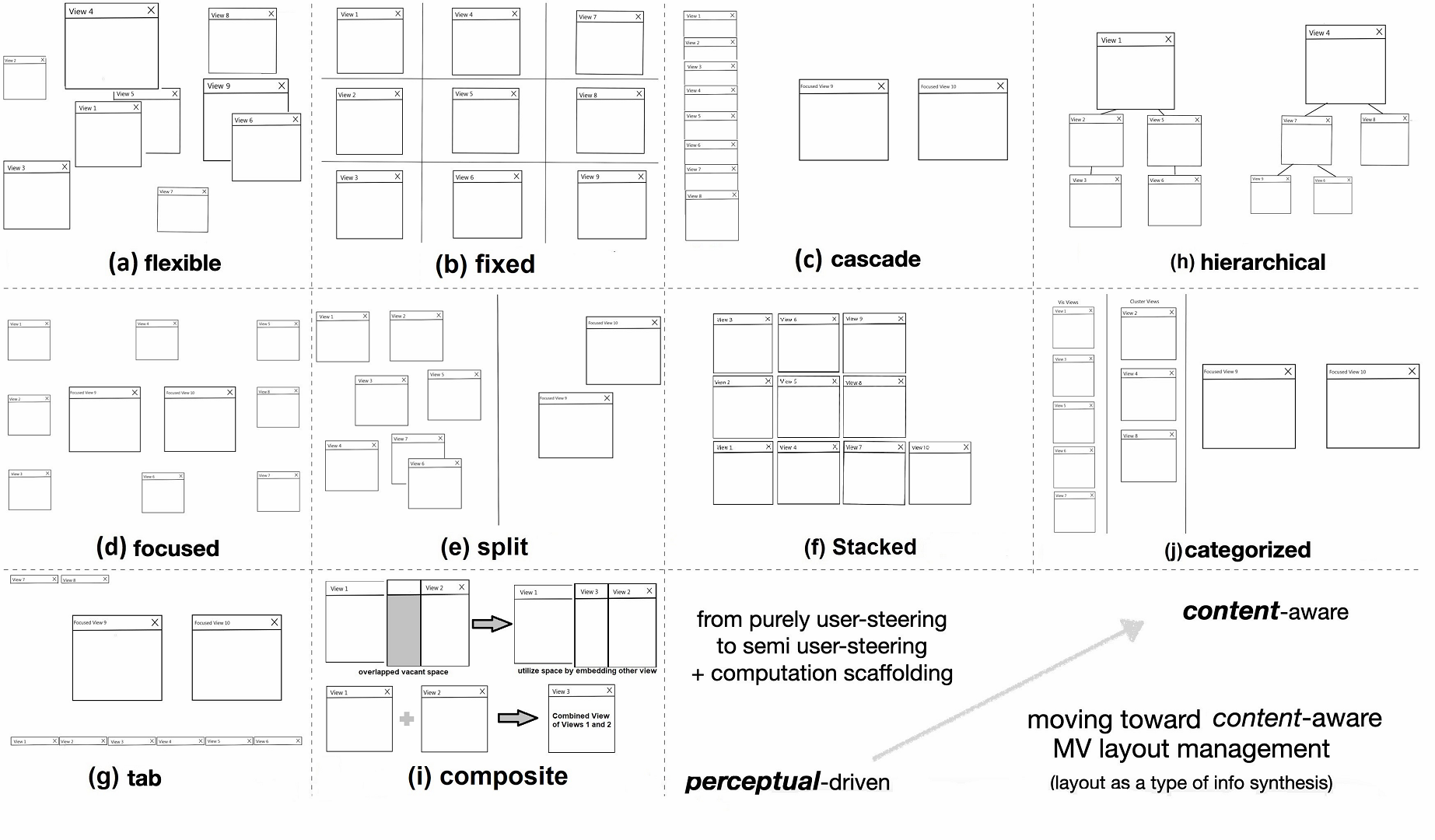Towards Systematic Design Considerations of Organizing Multiple Views
Abdul Rahman Shaikh, David Koop, Hamed Alhoori, Maoyuan Sun
View presentation:2022-10-20T14:36:00ZGMT-0600Change your timezone on the schedule page
2022-10-20T14:36:00Z

Prerecorded Talk
The live footage of the talk, including the Q&A, can be viewed on the session page, Personal Visualization, Theory, Evaluation, and eXtended Reality.
Fast forward
Keywords
Multiple views, visual analytics, spatial layout
Abstract
Multiple-view visualization (MV) has been used for visual analytics in various fields (e.g., bioinformatics, cybersecurity, and intelligence analysis). Because each view encodes data from a particular perspective, analysts often use a set of views laid out in 2D space to link and synthesize information. The difficulty of this process is impacted by the spatial organization of these views. For instance, connecting information from views far from each other can be more challenging than neighboring ones. However, most visual analysis tools currently either fix the positions of the views or completely delegate this organization of views to users (who must manually drag and move views). This either limits user involvement in managing the layout of MV or is overly flexible without much guidance. Then, a key design challenge in MV layout is determining the factors in a spatial organization that impact understanding. To address this, we review a set of MV-based systems and identify considerations for MV layout rooted in two key concerns: perception, which considers how users perceive view relationships, and content, which considers the relationships in the data. We show how these allow us to study and analyze the design of MV layout systematically.